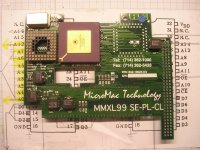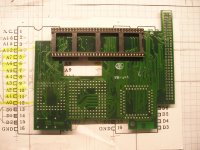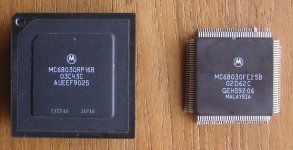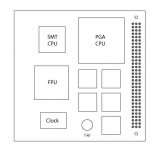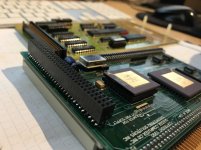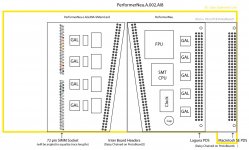Realized my verbal explanation of the 68030 PGA Socket interconnect wasn't at all clear and that one of my AI diagrams won't suffice, so:

This board handily illustrates what I'll be attempting to fit on my first 10cm x 10cm SEEED board. By dropping support for the Classic, the hole in the middle of the board for the A/B cable goes away.
The thruholes you see for its 68 pin socket interface (it's really more, but we'll say 68 for simplicity's sake) will become a three ring PGA array for a socketed 68030. That allows for testing both processor packages on my board.
A fifth GAL socket will be added to match the loadout of the Performer.
Visualize the SE's 68 pin EuroCard PDS connector (same as used for a NuBus card) added to the above card per the Performer config.
Space limitations will likely require dropping the 68000 socket to keep the prototype within the confines of an inexpensive board, but can be added to the final version as could the crazy form factor for Classic compatibility.
As a last resort, the FPU socket will be dropped from the prototype form factor to reclaim its PCB acreage. A purist I'm not. [}

]
